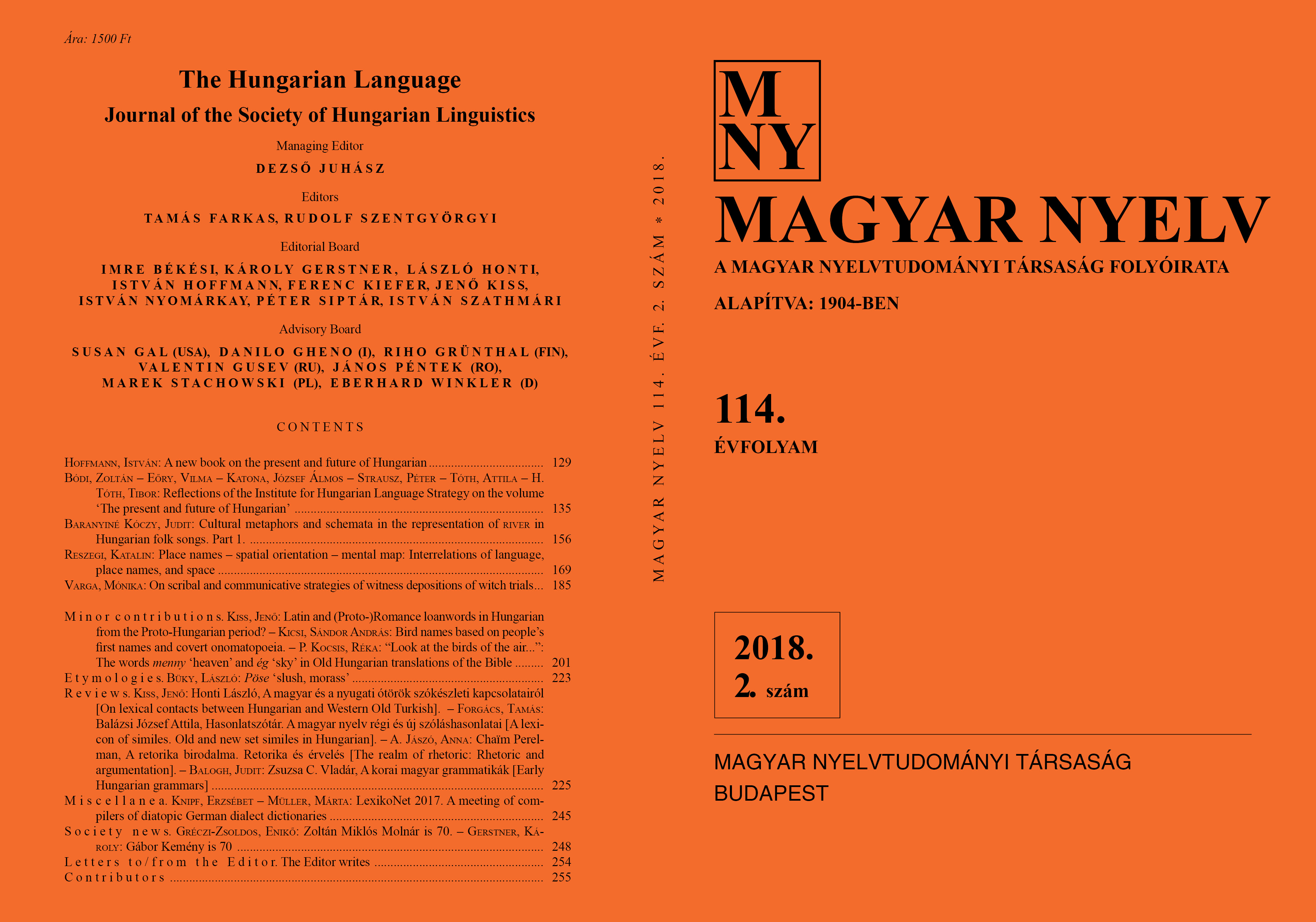Bird names based on people’s first names and covert onomatopoeia
DOI:
https://doi.org/10.18349/MagyarNyelv.2018.2.208Keywords:
Hungarian popular bird names, onomatopoetic bird names, bird names based on people’s first names, onomatopoeia, reanalysis, folk etymologyAbstract
Some Hungarian popular bird names come from people’s first names, albeit none of them have become official names of the bird species concerned. Many of them are also onomatopoetic in addition to being based on first names; thus such bird names exhibit “covert onomatopoeia”. Examples include butamáté (< Máté) ‘hoopoe’, csicsipál (< Pál) ‘great tit’, gábor and gábormadár with many other variants (< Gábor) ‘shrike’, gegő (< Gergő), györgydiák (< György), both: ‘butcher bird’, lidike (< Lídia), lili, lilimadár (< Lili), all three: ‘redshank’, mátyás, mátyásmadár, matyi (< Mátyás), all three: ‘jay’. These bird names came into being such that a human first name that more or less resembled the given bird’s song was turned into (part of) a bird name. It was rather arbitrary (i) which birds received first name based names and (ii) which birds received names with “covert onomatopoeia”. In modern ethnobiology, American bird names like killdeer and whip-poor-will are similarly instances of “covert onomatopoeia”.
Downloads
Published
Issue
Section
License
Copyright (c) 2024 Sándor András Kicsi

This work is licensed under a Creative Commons Attribution-NonCommercial-NoDerivatives 4.0 International License.
Magyar Nyelv is a Diamond Open Access periodical. Documents can be freely downloaded and duplicated in an electronic format, and can be used unchanged and with due reference to the original source. Such use must not serve commercial purposes. In the case of any form of dissemination and use, Hungarian Copyright Act LXXVI/1999 and related laws are to be observed. The electronic version of the journal is subject to the regulations of CC BY-NC-ND (Creative Commons – Attribution-NonCommercial-NoDerivatives).
The journal permits its authors, at no cost and without any temporal limitation, to make pre-print copies of their manuscripts publicly available via email or in their own homepage or that of their institution, or in either closed or free-for-all repositories of their institutions/universities, or other non-profit websites, in the form accepted by the journal editor for publication and even containing amendments on the basis of reviewers’ comments. When the authors publicize their papers in this manner, they have to warn their readers that the manuscript at hand is not the final published version of the work. Once the paper has been published in a printed or online form, the authors are allowed (and advised) to use that (post-print) version for the above purposes. In that case, they have to indicate the exact location and other data of the journal publication. The authors retain the copyright of their papers; however, in the case of an occasional secondary publication, the bibliographical data of the first publication have to be included.



